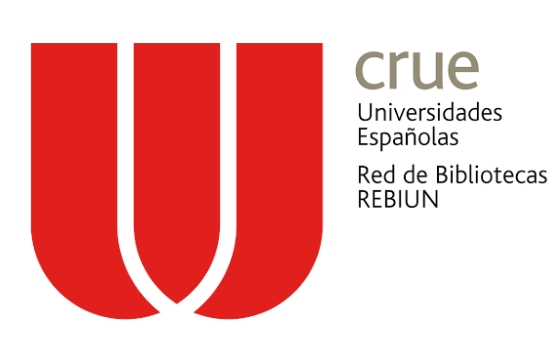Aymara ethnogeometry: proposal of mathematical terminology for the rural school of Perú
DOI:
https://doi.org/10.22267/relatem.20132.61Keywords:
Geometric terminology, ethnogeometry, Rural Schools, Ethnomathematics, AymaraAbstract
The present study is an approach to Aymara ethnogeometry that aims to identify mathematical terminology on Aymara geometry, under the epistemological support of Ethnomathematics and interculturality, hoping that it can have a positive impact on the learning and identity of students from rural schools in Puno, where there are problems due to linguistic interference. Within the framework of the ethnographic method, the information was obtained through visits and interviews with the Aymara speakers of the communities of the Moho and El Collao province of the Puno region - Peru, contrasted and supplemented with a documentary source Vocabulary of the Aymara language from 1612 and current specialized literature (books and dictionaries). The geometric terms were identified by equivalence and conceptual approximation, and this process showed that the Aymara language has a rich and flexible mathematical lexical background of its own to adapt to current scientific and pedagogical requirements, whether by creating neologisms or borrowing from raw or foreign languages, in case of gaps. The terminology presented in tables was written respecting the linguistic norms of Aymara, and it is expected that it will be standardized and socialized by the authorities of the Ministry of Education, and serve as the basis for future discussions and research.
Downloads
References
Arias M., P.P. (2005). Etnomatemática en la escuela primaria. Puno: Editorial Titikaka.
Ascher, M. & Ascher, R. (1986). Etnomatemática. Granada: Sin editorial.
Bermejo-Paredes, S., & Maquera-Maquera, Y. (2019). Interpretación de la escuela rural andina en comunidades aimaras de Puno-Perú. Revista Electrónica Educare, 23(2), 1-15. Recuperado de https://doi.org/10.15359/ree.23-2.4
Bertonio, L. (1603). Arte de la lengua aymara. Roma: Edición facsimilar de Leipzig B.G. Teubner. Imprimatur F. Angelus Bar. Venetus Mag.
Cerrón-Palomino, R. (2000). Lingüística aymara. Cuzco: Centro de Estudios Regionales Andinos “Bartolomé de las Casas”.
Condori-Viza, C., Navarrete-Álvarez, M., Aguirre-Cipe, I., & Chamorro-Pérez, A. (2017). Cultura Arica: Un caso para el estudio y educación de la geometría presente en textiles prehispánicos. Revista Latinoamericana de Etnomatemática, 10(2), 8-25.
D’Ambrosio, U. (2005). Society, Culture, Mathematics and its Teaching. Educação e Pesquisa. Revista da Faculdade Educação da USP, 9(1), 99-120.
D’Ambrosio, U. (2008). O Programa Etnomatemática: uma síntese. Rev. Acta Scientiae, 10(1), 7-16.
De la Hoz M., E., Trujillo Varilla, O., &Tun, M. (2017). La Geometría en la Arquitectura de la vivienda tradicional Arhuaca. Revista Latinoamericana de Etnomatemática. 10 (1), 1-14.
Deza G., J.F. (1989). Diccionario aymara-castellano, castellano-aymara. Perú. Sin editorial.
Fernández, L. (abril 2, 2008). Esta es la joya más antigua de Puno. En El Gran Sur, La República. Lima, Perú: Imp. Talleres del Grupo La República.
Ferreira, J. C., & Neves-Rogério, M. (2017). JOIAS DO ASÉ: Sobrevivência, transcendência e etnogeometria relacionados à sua produção na comunidade Casa do Boneco de Itacaré. Revista Latinoamericana de Etnomatemática, 10(3), 59-77.
Guerra, S. & Guerra, J. (2017). Fundamentos epistémicos complejos de la educación intercultural bilingüe. Revista Educación y Humanismo, 19(33), 441-455. Recuperado de http://dx.doi.org/10.17081/eduhum.19.33.2655
Layme P., F. (2004). Diccionario bilingüe aymara castellano. Bolivia: Consejo Educativo aymara.
López, L.E. (1988). Balance y perspectivas de la educación bilingüe en Puno. En L.E. López, (Edit.), Pesquisas en lingüística andina (pp. 17-36). Lima, Perú: Gráfica BELLIDO.
Ministerio de Educación. (1998). Vocabulario políglota incaico. Lima: Tipografía del Colegio de Propaganda FIDE del Perú.
Ministerio de Educación. (2002). Jakhuri Masija. Lima: Quebecor World Perú S.A.
Morín, E. (1999). Los siete saberes necesarios para la educación del futuro. (Traducción de Mercedes Vallejo-Gómez). París Francia. UNESCO. Recuperado de http://www.ideassonline.org/public/pdf/LosSieteSaberesNecesariosParaLaEdudelFuturo.pdf
Palao B., J. B. (2005). Etnohistoria del Altiplano de Puno. Puno: Arte y Color E.I.R.L.
Reynoso, C. (2019). Etnogeometrías: Patrones geométricos y cultura. Recuperado de http://carlosreynoso.com.ar/archivos/etnogeometria/Carlos-Reynoso-Etnogeometria.pdf
Kesseli, R. & Pärssinen, M.. (2005). Identidad étnica y muerte: torres funerarias (chullpas) como símbolos de poder étnico en el altiplano boliviano de Pakasa (1250-1600 d. C.). Bulletin de l'Institut français d'études andines [En línea], 34 (3). Recuperado de http://journals.openedition.org/bifea/4936; DOI: https://doi.org/10.4000/bifea.4936
Vilca Apaza, H. M., Yapuchura Saico, C. R., Mamani Apaza, W. W, & Sardón Ari, D. L. (2018). Maestros indigenistas y sus experiencias socio-educativas en el altiplano peruano en el siglo XX. Comuni@cción, 9(2), 90-100. Recuperado de http://www.scielo.org.pe/scielo.php?script=sci_arttext&pid=S2219-71682018000200002&lng=es&tlng=es.
Downloads
Published
How to Cite
Issue
Section
License
Copyright (c) 2020 Latin American Journal of Ethnomathematics: sociocultural perspective of mathematics education

This work is licensed under a Creative Commons Attribution 4.0 International License.
Once the article is accepted by the Latin American Journal of Ethnomathematics, the authors cede the rights to publish and distribute the text electronically, including storing it and making it available online.
The authors can distribute their own material without soliciting permission from the Latin American Journal of Ethnomathematics, whenever mentioning that the original version is found at http://www.revista.etnomatematica.org
Copyright © 2008, Latin American Journal of Ethnomathematics
All contents of the Latin American Journal of Ethnomathematics are published under the _ and can be used freely, giving credits to the authors and to the Journal, as established by this license.











